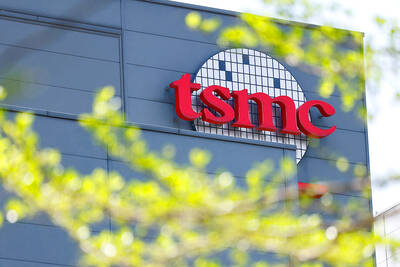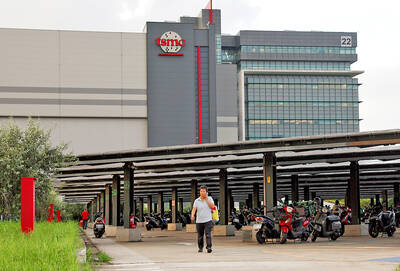Budget airlines are fast emerging as a growing force in Taiwan’s aviation market, with foreign carriers coveting Taiwan for its growth potential and ideal location and local airlines soon to join the fray.
Singapore’s Jetstar Asia (捷星) was the first budget carrier to gain a foothold in Taiwan, entering the market in 2004, and low-cost carriers have since grown in popularity and scope, especially over the past 18 months.
The number of passengers flying into or out of Taiwan on budget airlines more than doubled last year to 2.32 million passengers, or 5.9 percent of total traffic, up from 930,000 passengers (3.5 percent) in 2012, according to the Civil Aeronautics Administration (CAA).
One of the foreign budget carriers that has jumped into the market more recently is Scoot Airlines, which has built up a network of 13 destinations since it was established in 2011, and currently connects Taiwan to Singapore, Tokyo and Seoul.
According to Tracy Huang (黃明琦), marketing manager of Scoot’s local agent Federal Transportation Co (飛達), Taiwan has become an attractive market for Scoot because of its ideal geographic location, which offers connections of under four hours to North Asia destinations.
It is Scoot’s largest hub behind home base Singapore, Huang said. The airline served nearly 560,000 passengers in Taiwan last year alone, giving it the highest budget market share (24.1 percent) of any of the 13 low-cost airlines operating in the country.
At present, Taiwan does not have a budget airline of its own, but with the home market’s growing momentum too tempting to ignore, that will soon change.
Last year, TransAsia Airways Corp (TNA, 復興航空) became the first Taiwanese airline to announce it would set up a budget airline subsidiary, which is expected to become operational by the end of this year.
TransAsia had urged the government help local operators work together to establish a Taiwan-based budget airline, but it never received a positive response, according to Alison Kao (高治華), vice president of the airline’s public relations office.
“Taiwan needs to have its own budget airlines, so we decided to do it by ourselves,” Kao said of the new airline, which will be called “V Air” (威航).
Kao believes that despite an increasingly crowded budget market, the company has an edge in Taiwan as a local player because it will be able to provide services and pricing packages customized to the habits of Taiwanese travelers.
“We know Taiwanese people well and the service we provide will go beyond that of any other carrier,” she said.
V Air will still have passengers pay for value-added services, as is standard for most budget airlines, but it will focus on correcting the public’s impression that there is no service when flying with low-cost carriers, Kao said. The airline will also have a language advantage, helping prevent the common disputes between Taiwanese travelers and foreign budget airlines caused by language barriers, according to Kao.
V Air’s edge as a local player will be quickly challenged, however, as China Airlines Ltd (CAL, 中華航空), Taiwan’s biggest airline, also expects to launch a low-cost carrier at the end of the year.
It announced late last year that it would set up a joint venture with Singapore’s Tiger Airways, investing NT$1.8 billion (US$59.60 million) to take a 90 percent stake in the new carrier, to be named Tigerair Taiwan (台灣虎航).
Though Taiwanese carriers think they may eventually have a home-market edge, they and all other low-cost carriers will still have to find the right cost-control formula if they hope to maintain their growth and increase market share.
The low-cost carriers’ main strategy is well-known: have passengers pay extra for value-added services, such as onboard entertainment, meals and checked-in luggage.
That enables budget carriers to more precisely gauge the amount of fuel and aircraft needs, said Joey Kao (高歌樵), marketing manager at AirAsia, Asia’s largest budget air carrier.
AirAsia, whose AirAsia and AirAsia X brands combined accounted for a 19 percent share of Taiwan’s budget market last year, has made a profit every year despite rising fuel costs because of its good cost management, Joey Kao said.
Low-cost carriers also benefit from selling their tickets online, helping them avoid commissions to travel agents and costly ticketing offices and gaining the flexibility to adjust prices based on demand, he said.
Destinations will also be important to success. Much of the budget traffic through Taiwan has been to Japan and South Korea in North Asia and Singapore, Malaysia and the Philippines in Southeast Asia.
Relatively untapped so far are routes between Taiwan and China, which generally have high demand.
China’s leading budget airline, Spring Airlines (春秋航空), is currently the only budget carrier offering flights across the Taiwan Strait, with five flights a week between Taipei and Shanghai and three flights a week between Greater Kaohsiung and Shanghai.
The lure of that market, the entry of local carriers, and a sluggish economy that has made Taiwanese travelers look for cheaper fares all suggest a growing market for low-cost carriers in Taiwan.

TECH TITAN: Pandemic-era demand for semiconductors turbocharged the nation’s GDP per capita to surpass South Korea’s, but it still remains half that of Singapore Taiwan is set to surpass South Korea this year in terms of wealth for the first time in more than two decades, marking a shift in Asia’s economic ranks made possible by the ascent of Taiwan Semiconductor Manufacturing Co (TSMC, 台積電). According to the latest forecasts released on Thursday by the central bank, Taiwan’s GDP is expected to expand 4.55 percent this year, a further upward revision from the 4.45 percent estimate made by the statistics bureau last month. The growth trajectory puts Taiwan on track to exceed South Korea’s GDP per capita — a key measure of living standards — a

READY TO HELP: Should TSMC require assistance, the government would fully cooperate in helping to speed up the establishment of the Chiayi plant, an official said Taiwan Semiconductor Manufacturing Co (TSMC, 台積電) yesterday said its investment plans in Taiwan are “unchanged” amid speculation that the chipmaker might have suspended construction work on its second chip packaging plant in Chiayi County and plans to move equipment arranged for the plant to the US. The Chinese-language Economic Daily News reported earlier yesterday that TSMC had halted the construction of the chip packaging plant, which was scheduled to be completed next year and begin mass production in 2028. TSMC did not directly address whether construction of the plant had halted, but said its investment plans in Taiwan remain “unchanged.” The chipmaker started

MORTGAGE WORRIES: About 34% of respondents to a survey said they would approach multiple lenders to pay for a home, while 29.2% said they would ask family for help New housing projects in Taiwan’s six special municipalities, as well as Hsinchu city and county, are projected to total NT$710.65 billion (US$23.61 billion) in the upcoming fall sales season, a record 30 percent decrease from a year earlier, as tighter mortgage rules prompt developers to pull back, property listing platform 591.com (591新建案) said yesterday. The number of projects has also fallen to 312, a more than 20 percent decrease year-on-year, underscoring weakening sentiment and momentum amid lingering policy and financing headwinds. New Taipei City and Taoyuan bucked the downturn in project value, while Taipei, Hsinchu city and county, Taichung, Tainan and Kaohsiung

Micro-Star International Co (MSI, 微星科技) is expanding notebook computer production in India after partnering with Indian electronics maker Syrma SGS Technology Ltd late last year, as the Taiwanese company seeks to tap into the local market. MSI also plans to manufacture some of its new gaming PCs powered by Nvidia Corp’s RTX 50 graphics cards in India, while adding more advanced and design-focused PCs and notebooks at Syrma’s plant in Chennai, a source told the Taipei Times yesterday on condition of anonymity. MSI’s deployment in India is driven not only by cost advantages, but also by India’s rapidly expanding consumer market and